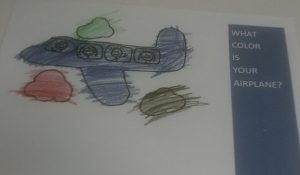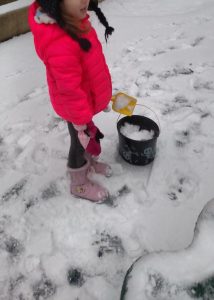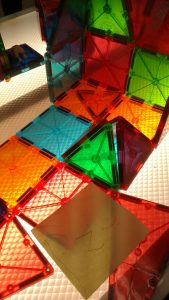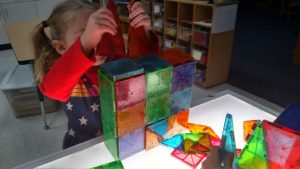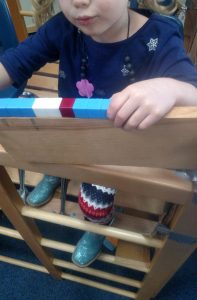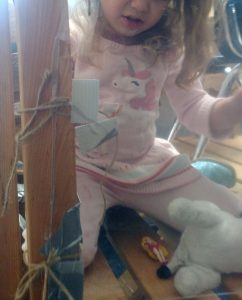 This week really was amazing — filled with many discoveries, struggles (that’s a good thing around here), FTEs (“First Time Evers”), and lots of laughter.
This week really was amazing — filled with many discoveries, struggles (that’s a good thing around here), FTEs (“First Time Evers”), and lots of laughter.
Welcome!
Thank you again for entrusting your children to our care. Ms. Lee, Ms. Kapadia, and I have genuinely enjoyed beginning to get to know you and your children.
Already, they have explored connections with each other, pairing- or tripling-off in small groups throughout our learning areas. Sometimes they formed their groups based on the activity: children ended up together because they wanted to explore the same area at the same time. Other times, children appeared to select specific peers, suggesting that it was the relationship itself, not the activity, that drew them together.
Not surprisingly, I’ve left school each day with a wide smile on my face, and feeling very enthusiastic about the next day and the year ahead.
This Week’s Curriculum – All About Me
Individuality and belonging. These seemingly paradoxical components of human life are central to our development as people. They also  come right to the fore during this fundamental year of school. Truly, your child is doing very profound work establishing their presence as a unique person and also as an essential member of a new group.
come right to the fore during this fundamental year of school. Truly, your child is doing very profound work establishing their presence as a unique person and also as an essential member of a new group.
Every person engages in this journey in their own way. It can be a difficult and scary trek and it can also be a very exciting and energizing one. To provide a structure for this expedition, the curriculum during the initial weeks of school is designed to give students multiple opportunities to express who they are while also challenging them to work together. For example, our morning welcome song (“Everybody Wave and Sing Hello”) gives each student the opportunity to add their own element to the song while also singing together.
Students also engage in a multi-step project: creating life-sized portraits. In the first three to five days of school, students lay the groundwork for this, by first tracing flat shapes,



then tracing trickier stuffed animals, all working towards tracing each others’ bodies. In the process, students also explore math concepts including geometry, ordinal numbers, and counting.
Circle Time
Students very quickly dove into an important, ongoing task: creating agreements. Inspired by their experiences, this week our focus was on ways to take of ourselves and of each other. Specifically, students suggested and agreed on how to treat each others’ bodies (no hitting), how to go through a door (one at a time), and how to help each of us have our voice heard. Students also began learning how to keep track of our daily routine using our schedule chart.
In group reading, the foci were emotions and punctuation. We read Bear Feels Scared, by Karma Wilson, Yo? Yes!, by Chris Raschka, and the beginning of You’re Finally Here!!!, by Melanie Watts. We took some time to read them, even reading a couple of them multiple times. We paused often as students noticed the connections between characters’ facial expressions and their feelings, predicted future events in the stories, and discovered ways we change our inflection based on the punctuation.
Emerging Discoveries
On Friday, several students discovered a cicada on the equipment. It was sluggish and patient as I pet its wing, demonstrating that it was safe to touch. A few students came close to touching it themselves, and everyone was respectful of it.  A few minutes later, a student approached me to report that it had been stepped on, and several other children chimed in with their versions of the story. It sounded like it had been a genuine accident. One student dubbed it “Willy,” we conducted a short ceremony, and buried it in the ground.
A few minutes later, a student approached me to report that it had been stepped on, and several other children chimed in with their versions of the story. It sounded like it had been a genuine accident. One student dubbed it “Willy,” we conducted a short ceremony, and buried it in the ground. 
When we return to school Monday, I’ll pull some insect books from our library for us to learn more about them. If student interest persists, we may find ourselves setting next week’s planned curriculum aside to study “cicadas,” or “insects” more in-depth. We shall see! (We call this process “emergent curriculum;” I’ll elaborate at Meet the Teacher Night.)

Some students inquired with Mr. Tecpanecatl regarding the loud work he was doing in the dumpster enclosure.
Music Listening
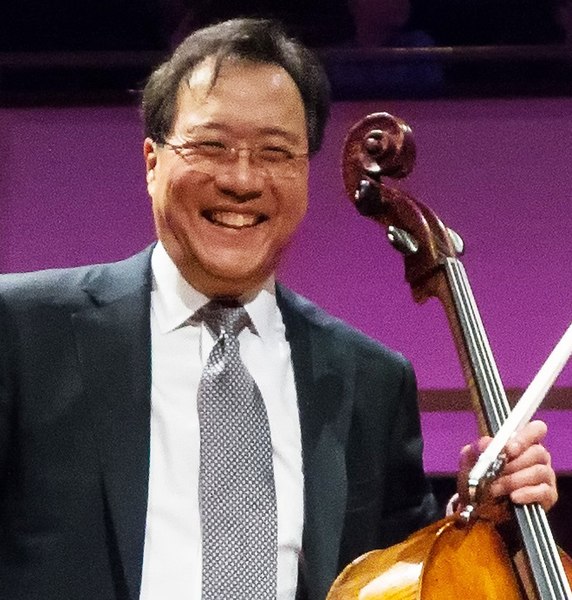 Most days, we listen to music together to cool down after outdoor play. This week, we listened to Bach’s Cello Suite #1. On Wednesday, we heard it played by Yo-yo Ma on cello, on Thursday, by Ana Vidovic on guitar, and on Friday, by Anna Dunford on marimba. Each day, I encouraged students to imagine how many people were playing, or what kind of instrument it was, before revealing the video. By Friday, students began proclaiming their ideas without my prompts!
Most days, we listen to music together to cool down after outdoor play. This week, we listened to Bach’s Cello Suite #1. On Wednesday, we heard it played by Yo-yo Ma on cello, on Thursday, by Ana Vidovic on guitar, and on Friday, by Anna Dunford on marimba. Each day, I encouraged students to imagine how many people were playing, or what kind of instrument it was, before revealing the video. By Friday, students began proclaiming their ideas without my prompts!  “Mr O! Is that Yo-yo Ma?” “I think four people are playing.” “That’s not a guitar.” I was very impressed. Next week, we’ll listen to more unaccompanied solos before moving on to duets.
“Mr O! Is that Yo-yo Ma?” “I think four people are playing.” “That’s not a guitar.” I was very impressed. Next week, we’ll listen to more unaccompanied solos before moving on to duets.
Center Time
This could warrant its own post, but if you’re still reading, I’ve kept you long enough! Here are some bullet points:
-
- the easels were so popular that we had to open up table space for more students to paint

- the painting inspired some students to go beyond two dimensions and incorporate natural materials into 3D collages

- the easels were so popular that we had to open up table space for more students to paint

- gravity and friction, both physical and social, were explored at length at the sensory table

- similarly, the loft was popular for explorations with gears and the doll house

- several different types of parties were in full swing in the dramatic play center every day
- What do we do when something gets broken? Fix it.

- construction was used but not particularly popular this week — time for some new inspiring materials!


- the library was home to explorations of literature and word structure, as students read at their own level and/or created words (both English and Martian) with our wooden letters


- The climber was actually very popular, I just didn’t get a shot of that!

Finally, our first week also included the Otters’ first-of-the-year library class, first art class, and first Drama class!
It’s been a fantastic first week, and we’re super-excited about the year ahead — fun, enlightening, and wonder-full!!
Thanks,
— Jeff











